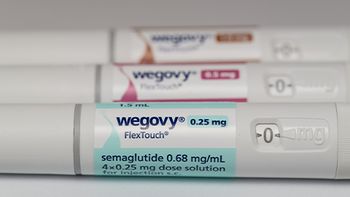Although many could make the argument that this comes as no surprise, a new report released by the US-China Economic and Security Review Commission has revealed concern for China’s dominance within the international pharma sector, and if the United States doesn’t act fast, it could result in major concerns for the domestic healthcare system.
As first covered by FirstWord Pharma,1 the report expresses distress when it comes to several areas of the supply chain, including:
- The production of active pharmaceutical ingredients (APIs)
- Contract R&D manufacturing
- The creation of new therapeutics
US dependence on Chinese APIs and KSMs
Despite the country’s alleged advantage in terms of the above categories, last year, the report noted1 that the value of the drugs that were licensed across the globe from China hit a whopping $48 million.
Due to this control, pharma manufacturers in the US are expected to continue to partner with China as they deal with another challenge: pipeline rebuilding to counterbalance the $200 million worth of meds that will be losing patent protection by 2030. China is also making strides in the realm of synthetic biology, further solidifying what the commission describes as “dominance of key chokepoints in the pharmaceutical supply chain.”
“Although the United States only imports 3 percent of oral doses and 9 percent of injectables from China, it is substantially more exposed to Chinese raw pharmaceutical ingredients, including APIs and KSMs [key starting materials]—biologically inactive chemical compounds that are purified into APIs,” the authors wrote. “Nearly a quarter of APIs in US generic drugs are potentially sourced from China, with India as a major intermediary, although the poor data visibility makes it difficult to determine the exact proportion.
“Supply chain visibility into KSMs in US generics is even worse, with anywhere from one-quarter to one-half of US generic drugs containing APIs developed from Chinese KSMs, often in India. While China has not formalized an export control regime for pharmaceuticals as it has for critical minerals, and global reputation costs may constrain it from doing so, the country could increase efforts to restrict pharmaceutical exports, including generic drugs as well as APIs and KSMs to the United States.”
Of course, these are merely calculations, as “poor data visibility makes it difficult to determine the exact proportion.” A potential solution, the commission proposes, are new laws that provide FDA with the capabilities to keep track of both APIs and KSMs by mandating that drug producers share ingredient quantities, along with details on where all drugs consumed in the United States came from. This could be a way to counteract reliance on Chinese APIs, establishing pharma supply chain resilience in the process.
Fast facts: China’s pharma supply chain dominance
- Nearly 25% of US generic APIs may originate from China, often via India.
- Up to 50% of US generic drugs could rely on Chinese key starting materials (KSMs).
- $48M worth of Chinese drugs were licensed globally last year.
Geopolitical risks and industry reliance on China
On a more positive note, the report noted that although it’s still a risk, China has not yet moved to weaponize its influence over pharmaceutical supply chains, possibly because of concerns about its global image. Despite that, the authors warned that China is “increasingly positioned to use this dominance as leverage against the United States.”
US companies’ reliance on China doesn’t just end with ingredients, as it extends to clinical development and manufacturing services as well. Drugmakers are drawn to China’s advanced facilities as a way to limit R&D risks and costs, but in doing so, the commission adds, they’re unintentionally strengthening China’s biomanufacturing prowess.
FirstWord Pharma makes the valid point of this not being the first time US lawmakers have attempted to address this issue. The industry might remember a push for the passage of the BIOSECURE Act—which was proposed last year. Its goal, according to Brad Stewart,2 BDO’s national life sciences co-leader, was to put strain on potential Chinese partners (think Wuxi Biologics and Wuxi AppTec) by prohibiting entities that receive funds from using biotech from foreign adversaries, but tariffs among other challenges have made it very challenging to pass, because of the unknown as to what's likely to happen in the future, so it's very difficult for people to plan and figure out what they're going to do.
Indeed, it was unable to pass both the House and Senate at the time, but on Oct. 9 of this year, the Senate approved the 2026 National Defense Authorization Act (NDAA), which incorporates the newest version of the BIOSECURE Act as an amendment. However, the House’s NDAA version does not include this provision, so lawmakers will continue negotiating the final bill. The overall purpose of the bill remains the same, although WuXi is not specifically named in this one.3
The long road ahead for US supply chain independence
The commission argues that this does not change the fact that the damage has already been done, noting that "Chinese biopharmaceutical companies such as Wuxi AppTec are so entrenched in US supply chains that estimates indicate it would take eight years for US companies to decouple and find alternative service providers," per FirstWord Pharma coverage.1
This is all taking place while the Trump administration pushes to continue its efforts in encouraging pharma manufacturers to onshore their manufacturing processes as a way to avoid major tariffs on their products, which continues to gain momentum.
References
1. Eaton ES. US Commission Warns China Could 'Weaponise' Chokepoints in Pharma Supply Chain. FirstWord Pharma. November 19, 2025. Accessed November 19, 2025. https://firstwordpharma.com/story/6681207
2. Saraceno N. Navigating Internal Constraints and Uncertainty. Pharmaceutical Commerce. March 13, 2025. Accessed November 19, 2025. https://www.pharmaceuticalcommerce.com/view/navigating-internal-constraints-and-uncertainty
3. McIntosh DM, Suzuki GJ, Wilhelm R. Senate Passes 2026 NDAA Including BIOSECURE Act Amendment. Ropes & Gray LLP. October 17, 2025. Accessed November 19, 2025. https://www.ropesgray.com/en/insights/alerts/2025/10/senate-passes-2026-ndaa-including-biosecure-act-amendment





